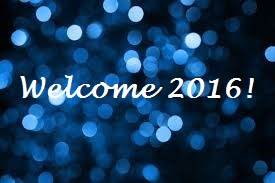I’m a big fan of KUT’s regular feature, Two Guys on Your Head. Each week University of Texas professors Art Markman and Bob Duke (Two Guys) discuss some aspect of behavior and the brain. For New Year’s Eve 2015 they explored “The Psychology of Changing Your Behavior,” focusing on those annual resolutions we make but do not keep. The conversation was about personal behaviors – eating healthy, exercising, drinking, saving money, and so on. But their insights can also help with our professional behavior. Here’s my reflections on some of Two Guys’ key points.
Making a resolution states an intention; it is not the accomplishment. It’s not enough for me to just verbalize that I will “write content” or “follow up with people.” In order to get results I have to take action.
Get specific. Two Guys didn’t address this but I believe it’s important. “Write content” and “follow up with people” may be worthy tasks. Or maybe not. What exactly am I saying I will do? How will I know if I’ve accomplished it? Resolving to “write and post to my blog every two weeks” or “follow up with new business acquaintances within one week” gives me a much better target and a means to measure my success.
Make a plan for action. Two Guys recommend taking some time to look at our behavior and how this behavior developed. Then identify specific (there’s that word again) changes and make realistic plans for how to change. My resolutions often relate to breaking bad habits. To create good content, I should schedule time to write and just do it! Or perhaps I need new or different resources to support the desired action. To improve my follow up activity, I can use a spreadsheet or CRM software to store and track client information.
Consider and change your environment. Our environment makes it more or less likely that certain behavior will occur. To help keep those resolutions, remove temptations and distractions. For a few writing projects, I can work in most any environment including a noisy coffee shop. For other projects, I do better in the quiet and familiar surroundings of my office. It’s up to me to locate to or create the environment for success.
Remember that in the coffee shop, library, or cubicle farm the environment is not yours alone. There are others to consider. You may not have the option to change the environment (library should be quiet) or you may need to get permission (from your employer or co-workers in the nearby cubicles) to make changes.
Associate with those who bring out the best in you. This is more difficult in our professional lives than in our personal lives. We can choose personal friends who bring out the best in us. Though we can’t choose our relatives we can usually manage the frequency and duration of interaction. A whole series of blog posts could be produced for this topic!
As for our relatives, we may not be able to hand pick employees, co-workers, vendors, partners, clients, and so forth. We can be self-aware enough (or at least work on that state) to identify who elicits our best selves and who does not. With that knowledge, we can take steps to manage the interactions.
I’m fortunate to have many positive encounters and relationships in my professional life. For those few interactions that are not so positive….let’s just say I look to each as a learning experience.
To sum up, knowledge is half the battle of keeping a resolution. The other half is taking appropriate action.
(Check out “The Psychology of Changing Your Behavior” and other Two Guys on Your Head features on KUT. You can also read Dr. Markman’s thoughts on this topic in a recent Dallas Morning News post.)

